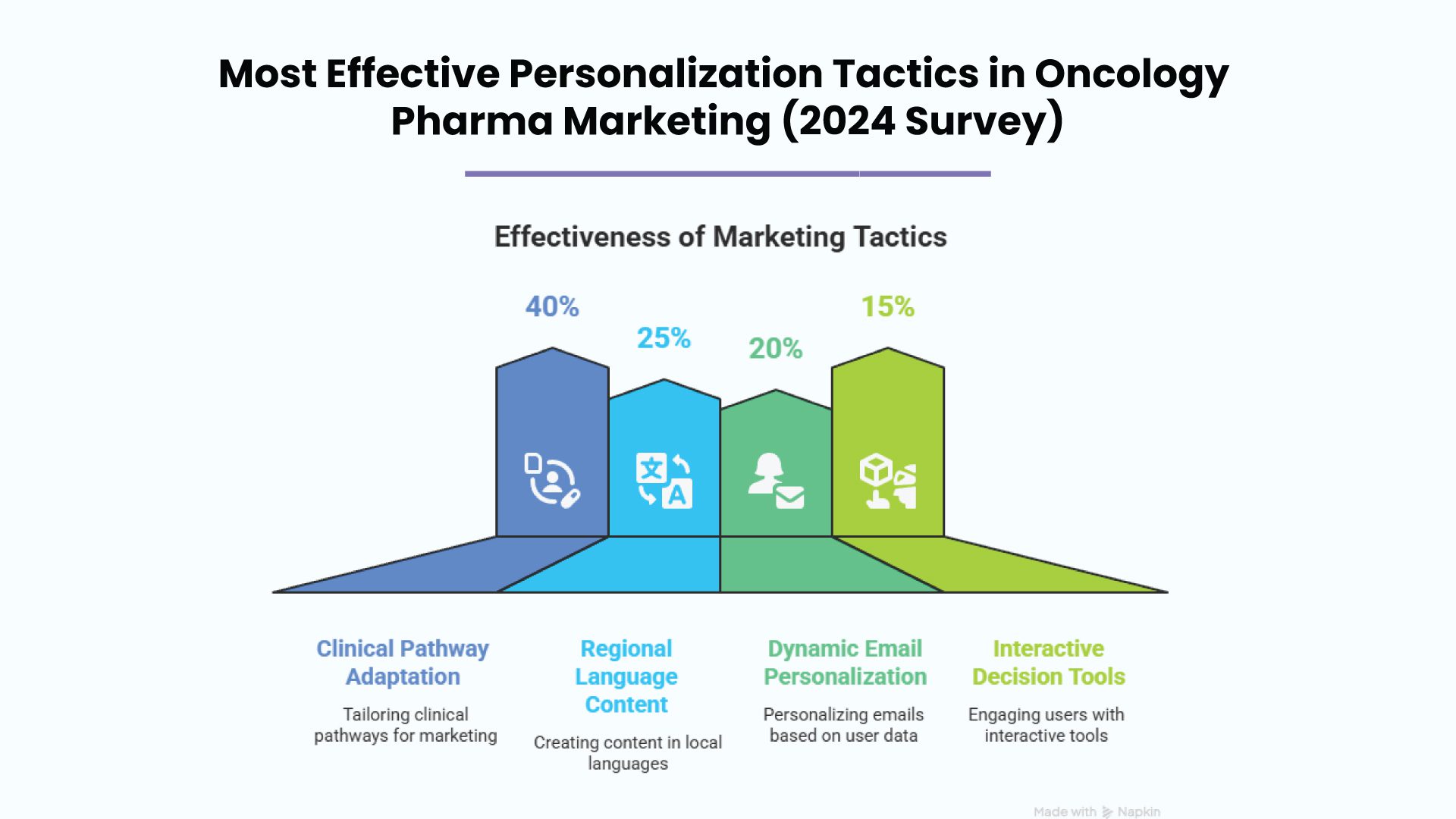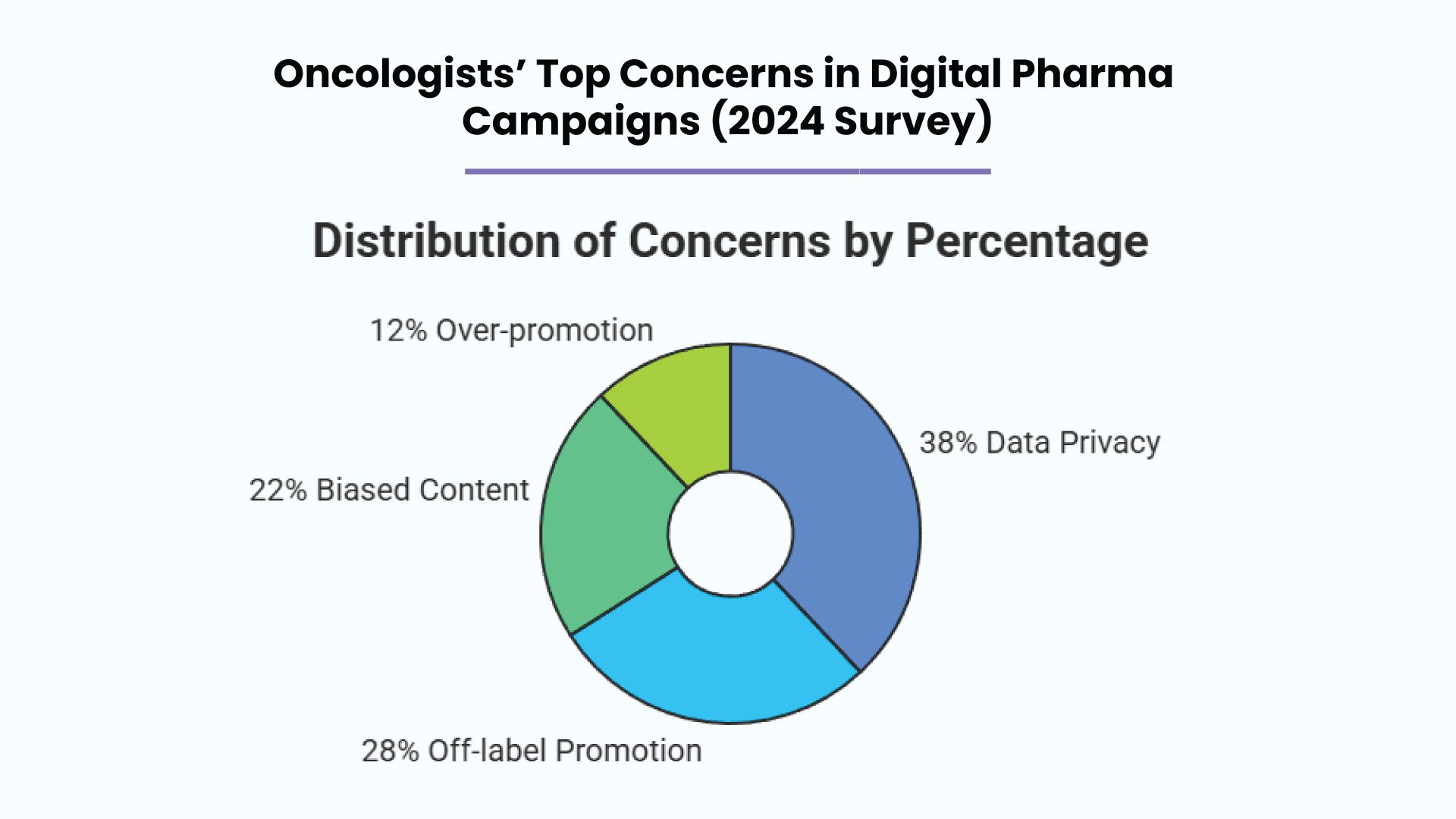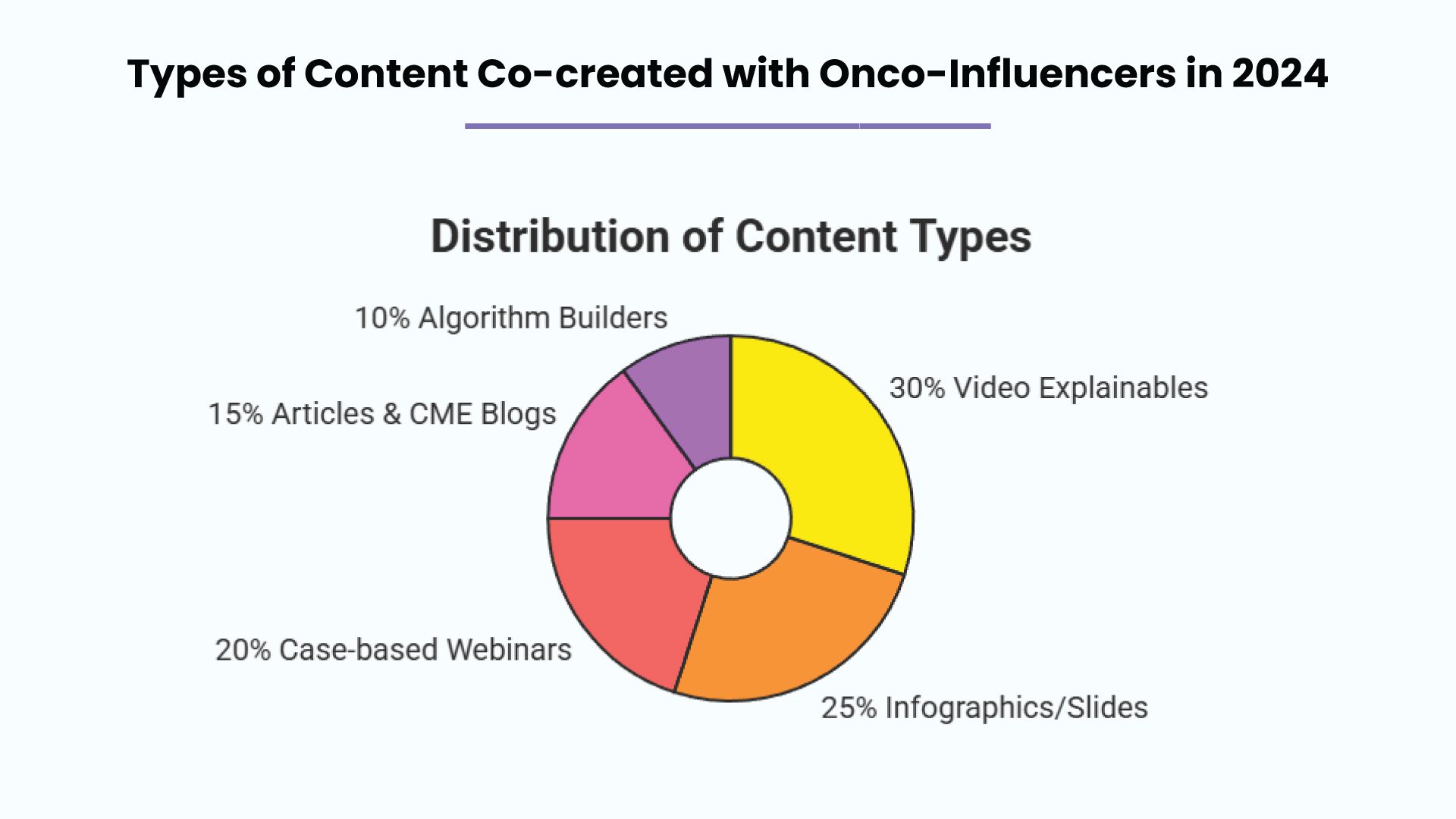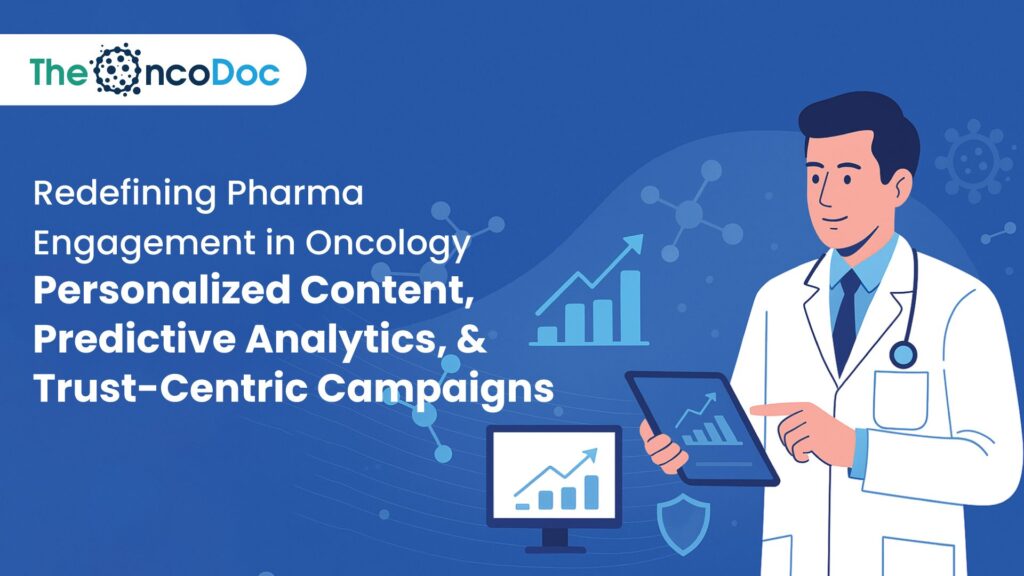Introduction: A Shift Toward Precision and Predictive Pharma Marketing
The landscape of oncology is rapidly changing, with an explosion of new treatments and diagnostic tools, alongside an increasing complexity in patient care. As this shift occurs, oncology professionals, including oncologists, are facing a more nuanced and demanding environment in which clinical decisions are becoming increasingly data-driven. The traditional approach to pharmaceutical marketing, which relied on mass-market advertising and blanket strategies, is no longer effective in this highly specialized field.
Oncologists, who were once primarily clinical decision-makers, are now digital consumers who expect timely, personalized, and scientifically credible information. These professionals are inundated with a constant flow of data, making it difficult for pharmaceutical companies to capture their attention and influence their decisions effectively. In this new era, a trust-based, data-driven approach is necessary. Pharmaceutical marketers must understand the need for personalized engagement, predictive analytics, and an unwavering commitment to regulatory compliance.
The need to evolve is clear. Pharma marketers must shift from generic, one-size-fits-all campaigns to more sophisticated, targeted strategies that prioritize individual preferences and behaviors. In this article, we’ll explore how the pharmaceutical industry can redefine its approach to oncology marketing, focusing on the strategic use of personalized content, predictive analytics, and trust-building tactics. We will look at new trends, data-backed strategies, and innovative ways to drive engagement with oncologists—ultimately leading to better patient outcomes.
The Rise of Predictive Engagement in Oncology Marketing
Introduction: A Shift Toward Precision and Predictive Pharma Marketing
One of the most significant changes in oncology marketing is the rise of predictive analytics. Predictive analytics involves using data, both historical and real-time, to forecast future behaviors. This technology has become a game-changer in the pharmaceutical industry, particularly in oncology, where information overload is a constant challenge for oncologists. Predictive models can help marketers understand oncologists’ content preferences, their typical behavior patterns, and even the time of day when they are most likely to engage with specific types of content.
The ability to segment oncologists based on their behaviors, treatment interests, and digital engagement patterns offers a more precise approach to targeting. Marketers can focus on the needs and interests of each oncologist, using data to deliver content that is highly relevant at the right moment. This transition from “pushing” messages to predicting and meeting the oncologist’s needs is key in delivering impactful and valuable engagement.
Predictive Targeting Models in Oncology
A few key models employed to refine targeting include:
Behavioral-Based Segmentation: This strategy involves grouping healthcare professionals (HCPs) based on their engagement with content. For example, an oncologist who often interacts with videos may be more likely to respond to video-based educational content than one who prefers reading scientific papers.
Treatment-Pattern Recognition: Using predictive analytics, pharma marketers can map oncologists’ interests to specific therapy areas. For instance, if an oncologist frequently engages with content related to CAR-T or triple-negative breast cancer, content tailored to those treatment areas can be delivered to them.
Timing Triggers: Marketers can predict when oncologists are most likely to engage with content, such as after attending a major medical conference or reading a relevant journal article. By timing the delivery of materials around these key moments, the chances of content consumption increase significantly.
Predictive analytics allows pharmaceutical companies to move beyond simply broadcasting messages. Instead, they can anticipate what information will be most valuable to an oncologist, ensuring that their communication is timely and relevant.
Personalization at Scale: Moving Beyond CRM Blasts
Personalization is no longer a marketing luxury—it is an essential strategy in the pharmaceutical industry, especially in oncology. Marketers in the oncology space are adopting advanced content personalization tools that go beyond generic email blasts. These tools leverage machine learning to deliver personalized content at scale, adapting to an oncologist’s behavior, subspecialty, and regional preferences.
Key Personalization Levers:
Local Clinical Pathways: Content can be tailored to reflect national or hospital-specific treatment regimens. For example, a treatment guideline that is common in one region might not be the same in another, so pharma marketers can personalize content accordingly.

Language Optimization: Personalizing content by offering translations into regional languages or dialects ensures that the material resonates with oncologists in different geographies, improving accessibility and engagement.
Micro-Preference Cues: Analyzing subtle behavioral patterns, such as how long an oncologist watches a video or where they pause it, can inform follow-up actions. These micro-preferences are valuable insights that allow for even more personalized engagement.
In the highly specialized field of oncology, generic emails and one-size-fits-all campaigns no longer suffice. Personalized content, when executed effectively, fosters stronger relationships with healthcare professionals, drives greater engagement, and builds trust in the pharmaceutical brand.
From Push to Pull: Designing Content That Oncologists Seek Out
In traditional marketing, the emphasis was often on pushing content to the audience. However, in oncology marketing, the focus is shifting towards creating “pull-through” content—materials that oncologists actively seek out and engage with on their own terms. This shift reflects the changing dynamics of digital engagement and the increasing need for content that resonates with oncologists’ specific interests and clinical needs.
High-Impact Content Formats Include:
Interactive Clinical Algorithms: These tools help oncologists with decision-making, such as staging a patient’s condition, determining therapy sequencing, or managing adverse events. These highly relevant, interactive tools serve a practical purpose, making them indispensable for oncologists.
2-Minute Explainers: Short, concise videos explaining complex topics like mechanisms of action, trial protocols, or emerging data can capture oncologists’ attention in a way that written materials often cannot. In today’s fast-paced world, 2-minute videos offer a quick yet effective way to communicate vital information.
Peer-Endorsed Slide Decks: Content developed in collaboration with respected regional influencers or tumor board moderators provides peer validation and enhances credibility. These slide decks can be shared within online communities, increasing their reach and impact.
By developing content that aligns with how oncologists consume information—mobile-first, evidence-centric, and quick-glance—pharma companies can foster greater engagement and trust with their target audience.
Strategic Use of Micro-Communities and Niche Peer Forums
Oncology professionals are increasingly turning to micro-communities—informal yet highly specialized digital platforms such as WhatsApp groups, private LinkedIn cohorts, and even Discord-like forums. These communities allow oncologists to discuss complex cases, share insights, and exchange treatment strategies in a peer-driven environment. For pharmaceutical companies, participating in these communities offers unique opportunities to engage directly with oncologists in meaningful ways.
Pharma companies must approach participation in these communities with caution and ethics in mind. Non-branded educational tools, case study discussions, or expert-led webinars can provide value without violating regulatory guidelines. When done properly, these efforts can help build credibility and foster long-term relationships with oncologists.
A case example of successful engagement in micro-communities comes from a global pharma company that supported a breast cancer micro-community on Telegram. By offering valuable, non-branded resources such as trial protocol animations and patient assessment checklists in local languages, the company was able to organically grow the group from 70 to over 400 oncologists in just three months.
Ethical Guardrails in Personalized Marketing
While personalized marketing holds tremendous potential, it also carries significant ethical and regulatory challenges. In oncology, where patient care is life-critical, pharma marketers must navigate strict guidelines to ensure that their campaigns are not only effective but also compliant with regulations governing data privacy and healthcare marketing.

The regulatory landscape varies significantly by region:
European Union (EU): Under GDPR, pharma companies must obtain explicit consent for data collection, with a strong emphasis on patient privacy and data security.
India: The Digital Personal Data Protection (DPDP) Act requires companies to store data locally and maintain access logs to ensure compliance with regional regulations.
United States: HIPAA, along with state-specific laws, mandates strict patient-level anonymization to protect sensitive healthcare information.
By adhering to these regulations, pharmaceutical marketers can ensure that their campaigns are both compliant and ethical, building trust among oncologists and other healthcare professionals.
Content Co-Creation with Digital Onco-Leaders
Content co-creation with digital-savvy oncologists is another powerful strategy in oncology marketing. These influencers, who are often early-career professionals or non-traditional thought leaders, can add authenticity and credibility to marketing campaigns. Collaborating with these individuals allows pharmaceutical companies to translate complex clinical data into practical, actionable insights that resonate with their peers.

Effective engagement with digital oncologists should involve editorial independence, incentivizing them with education rather than mere financial compensation, and leveraging neutral platforms like Medscape or YouTube EDU for maximum reach. These strategies not only help increase campaign credibility but also build stronger, more genuine relationships with the oncologist community.
Success Metrics that Reflect Clinical Impact
In the past, pharmaceutical marketing relied heavily on vanity metrics—likes, shares, and impressions. However, in oncology, where clinical decisions are paramount, marketers are shifting towards performance metrics that reflect real-world clinical impact. These include:
Tool Reuse Frequency: Tracking how often oncology tools or resources are revisited by healthcare professionals can provide insight into their practical value.
Guideline Summary Downloads: Monitoring the download rates of clinical guidelines offers a tangible measure of content relevance and utility.
Referral or Rep Follow-up Requests: Tracking how often oncologists request follow-up meetings or additional information can indicate a campaign’s effectiveness in generating interest and engagement.
By focusing on these meaningful KPIs, pharmaceutical marketers can better align their campaigns with the true needs of the oncology community, ensuring that their efforts are truly contributing to patient care.
Spotlight: A Predictive Content Engine in Lung Cancer Therapy
A multinational pharmaceutical company recently implemented an AI-based content engine aimed at oncologists treating non-small cell lung cancer (NSCLC). By analyzing historical data, treatment trends, and conference attendance, the platform was able to push targeted videos, interactive slides, and region-specific trial news to the right oncologists at the right time. The results were striking:
- +62% increase in content consumption in Tier-2 cities
- +31% increase in rep meeting conversions
- 18% increase in diagnostic tool adoption
By linking personalization to therapy behaviors, this campaign not only reached oncologists in metro centers but also helped bridge access gaps, supporting educational equity in less-served areas.
Conclusion: Trust, Personalization, and Measurable Value
As oncology evolves, pharmaceutical marketers must adapt by embracing data-driven, personalized, and trust-based strategies. By leveraging predictive analytics and co-creating content with credible digital influencers, pharma marketers can build long-term relationships with oncologists, ultimately contributing to better patient outcomes.
To succeed in oncology marketing, pharma companies must focus on:
- Anticipating oncologists’ needs through predictive analytics.
- Creating clinically relevant, co-created content.
- Personalizing and localizing content at every touchpoint.
- Upholding trust and compliance through ethical marketing practices.
The future of pharma marketing in oncology is not about selling a product—it’s about serving the oncology community with value, trust, and measurable impact.
The Oncodoc team is a group of passionate healthcare and marketing professionals dedicated to delivering accurate, engaging, and impactful content. With expertise across medical research, digital strategy, and clinical communication, the team focuses on empowering healthcare professionals and patients alike. Through evidence-based insights and innovative storytelling, Hidoc aims to bridge the gap between medicine and digital engagement, promoting wellness and informed decision-making.



